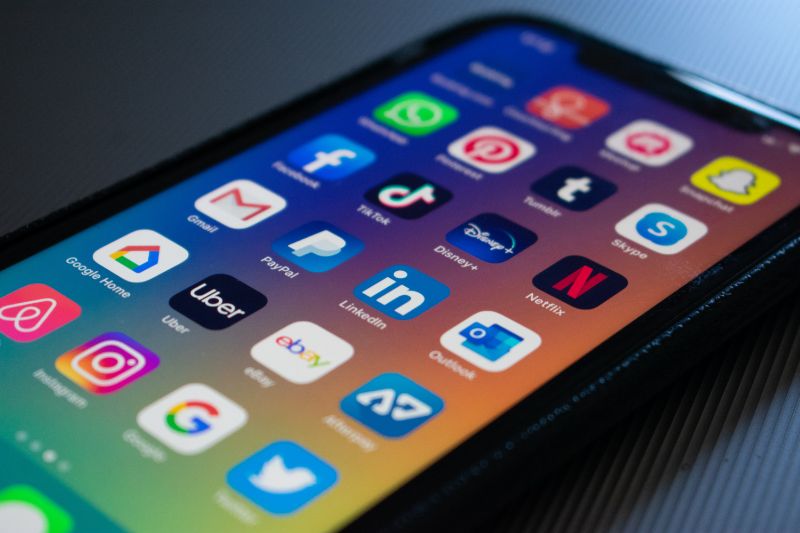As a tradie, you have one clear advantage worth leveraging: your personality. And when you think about yourself, you’re looking at your skills, personality, reputation—and even your sense of humour.
When it comes to developing a strong personal brand, the challenges you face are threefold:
- To communicate all these aspects of yourself,
- To build trust, and
- To translate your identity and people’s trust into sales.
Personal branding is precisely about answering these questions. In this guide, we’ll first debunk the common misconceptions about personal branding, then provide you with 5 expert strategies in building a personal brand.
Misconceptions about Personal Branding
The top question most tradies ask us about personal branding is this: isn’t personal branding only a point of concern for white-collar professionals like CEOs and news anchors? The simple answer is no, and here are some reasons why.
1. Regardless of your profession, there’s always competition
Think of the hundreds of tradies within your area offering the same construction and repair services. In the eyes of potential clients, you’re all the same. You’re doing the same job, using the same tools, and very likely employing the same methods.

Personal branding focuses the spotlight towards you—the qualities that make you (and by extension, your business) different, and your unique approach to getting the job done versus that of your competitors.
2. People choose products and services the same way: emotionally
No matter what items or services people spend on, they always circle back to how their purchases make them feel. Without a personal brand, what you have to offer is merely functional.
When you focus purely on the functional aspects of your job, you’re more likely to be seen as just another option out of many. This isn’t exactly the outcome that you hope for when getting clients.
As much as possible, you’ll want to establish loyalty with clients that will generate repeat business. If you haven’t heard, they’re more likely to earn you more money than new customers.
With this in mind, it’s important to take emotional loyalty into consideration when building a personal brand.
3. People buy into businesses with stories
Even though tradie work is highly technical, you’re still in a good position to craft narratives around what you do, how you started, and what kept you going in the business.

In fact, storytelling is the way famous brands like Apple and FedEx kept their businesses thriving after getting very close to failure. Additionally, a 2015 survey by Headstream concluded that 80% of people want brands to tell stories—your personal brand shouldn’t be an exception.
Strategy #1 – Reflect on Your Personality and Impact
First and foremost, it’s crucial to know how you want to present yourself as you’re building a personal brand. You may already have ideas of how you want to be perceived by the world, and that’s a good start. But it’s even better to reevaluate this perception from time to time.
The critical thing about this exercise is to fully flesh out these ideas. Identify if there are identities that clash, are redundant, or need to be refined. Remember: consistency is key in building a personal brand, so you’ll want to communicate one clear message about who you are.
In order to accomplish that, you can opt to try out two methods:
1. Mind mapping
Draw yourself at the centre of a piece of paper and go crazy. Seriously. Write down major themes you feel apply to you, then branch into specific concepts that resonate with your personal brand. You can start with boxes for attributes, personality, and values then see where your short exercise in self-discovery leads you.
Once you see all these words on paper, you’ll find common denominators among these words. You can give it a once-over to find that you value certain perceptions more than others, and can eliminate the less important ones.
2. Gathering feedback
If you ever find yourself stuck on how you want to be perceived, it might help to know how you are currently being perceived. The best way to find out is to ask people you’ve worked within the past.
How do they see you? Do they think you’re friendly? Detail-oriented? Always on time? These pieces of feedback can serve two purposes: 1) they can be used as inputs to your mind map to bolster your personal branding design, or 2) they can provide insight to how you don’t want to be perceived. This way, you’ll be able to correct your image in future versions of your personal brand.
We understand that it’d be more than a bit odd to dig through your address book, asking people to evaluate you as a person. We recommend being open about your goals and inviting them to give an honest appraisal as a favour to you—just be sure to brace for surprises for better or worse!
Once you’ve crafted your desired personal brand identity, you’ll then want to look at the services you offer. Make sure your offerings and processes align with your findings. From here, you’ll decide if you want to add or remove services, improve your customer service policies, or maybe even venture into something new.
Other personal branding strategies are highly dependent on your relationship with your work. For example, if you’re not as engaged in your work as you say you are, it will show. Being clear on this aspect makes for a stronger personal brand.
Strategy #2 – Fully Understand Your Target Customers
After you’ve spent some time thinking about who you are, you’ll then want to look at who you’re doing business with. Understanding your target customers is essential to know how to communicate and present yourself through your personal brand.
Here are two places you can look for a clearer understanding of your target customers.
1. Customer pain points
Pain points are the problems your target customers face. You can easily identify this by looking through the data you’ve gathered about your existing clientele. It’d be great to get them in a conversation, but simply recalling what problems they tend to report (e.g. a leaking roof) and how they felt about them will be enough.
Be as exhaustive as possible when identifying their pain points. You’ll want to know exactly where you and your solutions fit in their lives, and then how best to fit work your solutions into your personal brand.
2. Buyer personas
Surely, you don’t intend to work with just one type of customer—you’re aiming to work with a lot of them.
In an ideal world, you’d have the luxury of time to get to know each and every one of them to personalise your brand. Since this is a real world, your closest bet is to create buyer personas: fictional customers who represent certain segments of your current and future customer base.
For example, you might have a “Busy Betty”, a middle-aged woman who runs errands for her home. Breaking her personality into digestible parts will help you understand how you can solve her problems around the house and make her life easier. Knowing her routines, activities, and attitudes toward things will lead you to understand the types of people she might want to reach out to for tradie work.
It’s better to invest some time in this exercise now, rather than throwing away an entire concept when you realise that what you prepared isn’t what your customers want to see after all. For more information on creating a buyer persona, you may want to check out our ebook guide here.
Strategy #3 – Maximise the Power of LinkedIn
Once you’ve gotten to know yourself and your desired customers, now it’s time to spread the word about your business.
Professionalism and authority are key considerations when building a personal brand. You’re lucky to be in an age where establishing those things is easier than ever: all through the power of LinkedIn.

As we’ll discuss later, you still ought to use other social media platforms. But for now, let’s go over some of the reasons why LinkedIn should be your starting point.
1. A dedicated platform for business interactions
LinkedIn was literally built for professionals. This means that its users are involved in business in one way or another. Naturally, people looking for experts in certain fields go to LinkedIn to find these experts.
As a tradie, this matters to you because you want to be the guy or gal in your field (e.g. home building). Being in LinkedIn gives you that legitimacy: you’re not just another contractor but a person serious about their business.
2. An online resume
In LinkedIn, you can highlight your background, years of experience, and projects you’ve worked on. More than the nature and duration of your projects, you also have the opportunity to share stories about your past, ongoing, and future projects.
Compared to the traditional resume, potential clients can see how you work in real-time.
3. A source of organic traffic
Unlike other platforms that inevitably drive you to pay for targeting and traffic, your posts are likely to get more traction on LinkedIn based on your content and organic engagement (likes and comments).
When you’re just at the beginning of building a personal brand, you’ll want to leverage tools that are likely to give you more for less.
Strategy #4 – Diversify Your Digital Presence
After some time, you’ll want to open your doors to new social media channels. This means having accounts on Facebook, Twitter, and/or Instagram.
In order to do that, people have to hear about you first. In other words, you have to create awareness. Social media platforms are your best bets when it comes to getting your foot in the door.
When you start operating on multiple platforms, you have to keep these two things in mind.
1. Your personal brand’s style
You’re everywhere, so make sure people recognise you wherever they may find you. Creating a style guide can help you pay attention to colours, images, and fonts to ensure that your personal brand is consistent across the board.
2. Platform-specific posts
While this is self-explanatory, we can’t emphasise enough that each platform has its own nuances.
On Twitter, for instance, you can only tweet 280 characters at a time. People also tweet very rapidly—to the point where the platform generates content at a rate of 6000 tweets per second. With this in mind, you ought to ensure that your tweets are snappy and memorable.
Instagram, on the other hand, is a very different ballgame. You have to consider how well you can convey your messages in pictures, and how deep of an impact you can make on people without saying too much.
This is just the tip of the iceberg when it comes to increasing your digital presence. Just the same, an understanding of these ideas will help you become more effective in drawing people’s attention to your personal brand.
For more information, we covered the topic of social media marketing more comprehensively in this article.
Strategy #5 – Build a Community
As your personal brand grows, so too does your following. What you’ll want to do then is to nurture these people who’ve grown to become advocates for your personal brand. That’s where building a community comes in.
Nowadays, it’s very simple to create a community. On LinkedIn and Facebook, all you have to do is create a group and invite current and prospective customers to join. On Twitter, you can create a hashtag unique to your brand.
Once you’ve done that, you’ll want to post content regularly. The types of posts that are most effective in community are free content that provides great value to your readers. This means nuggets of wisdom, tips of the day, Q&As, and topic discussions.
As a matter of fact, one of our strongest assets (and something we’re very proud of) as a brand is the Facebook Community of like-minded tradies that we’ve set up. It takes a lot of work to maintain, but the level of intimacy we’ve developed among our clients is well worth it.
Part of building a personal brand is showing people that you care about them more than you care about their money. When people feel cared for, they’ll have no reason to doubt that you provide top-notch, quality services.
Providing free knowledge in a community is a great way to gain your customers’ emotional buy-in, but if you run out of ideas, having your community share stories about their problems and experiences is always a good thing.
Conclusion
If there’s one thing you should prioritise as a business leader, it’s your personal branding. In a world where people look for stories and meaning when it comes to availing services, it’s vital to step up your personal branding to get ahead of the game.








